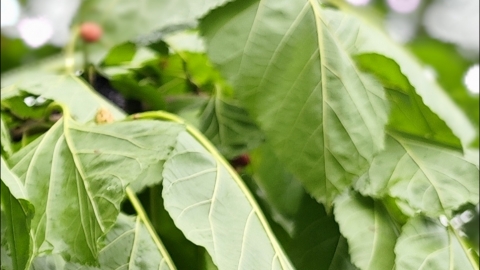Can eating mulberry fruits and leaves treat any diseases?
Generally, mulberry leaves can be used to treat conditions such as exogenous wind-heat, lung-heat cough, dizziness and vertigo caused by hyperactivity of liver yang, red and swollen painful eyes, and bleeding disorders due to blood heat. Details are as follows:

1. Exogenous Wind-Heat: When symptoms such as wind-heat感冒 (common cold with heat symptoms) or the initial stage of warm disease occur, patients often experience fever, headache, cough, sore throat, dry mouth, and thirst. Mulberry leaves can be used to dispel wind-heat and alleviate these symptoms.
2. Lung-Heat Cough: Cough caused by lung heat presents with symptoms such as coughing, yellow and sticky phlegm, and sore throat. Mulberry leaves can clear lung heat, reduce lung qi, and moisten the throat, thus being effective for treating lung-heat cough.
3. Dizziness and Vertigo due to Hyperactivity of Liver Yang: Patients with hyperactivity of liver yang may experience symptoms such as headache and dizziness. Mulberry leaves have the effect of clearing liver heat and subduing liver yang, thereby improving symptoms of dizziness and vertigo.
4. Red, Swollen, and Painful Eyes: Symptoms such as redness, swelling, pain, photophobia, and tearing of the eyes caused by wind-heat can be treated with mulberry leaves, which have the function of clearing liver heat and improving vision. They are often combined with other herbs such as chrysanthemum flowers (Chrysanthemum morifolium), cassia seeds (Cassia obtusifolia), and prunella grass (Prunella vulgaris) to treat red and painful eyes.
5. Bleeding Disorders due to Blood Heat: Mulberry leaves also have a certain cooling blood and hemostatic effect and can be used to treat symptoms such as nosebleeds and hemoptysis caused by blood heat. However, in clinical practice, they are usually used as an adjunctive therapy.
Although mulberry leaves have certain medicinal value, they cannot replace medications or professional medical treatments. If you have any illness, you should seek timely medical attention and undergo treatment under the guidance of a physician.




